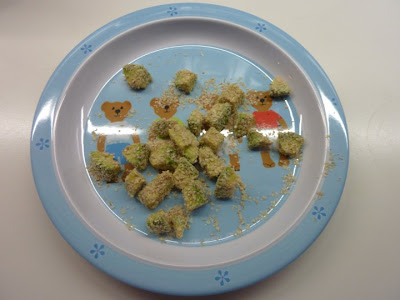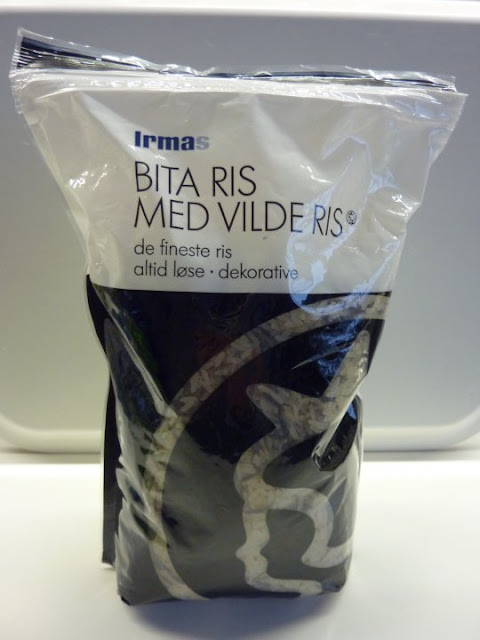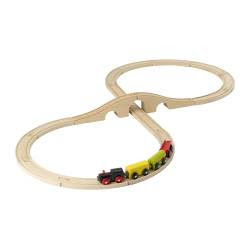When J was a baby, he would listen and look at the pictures, when I read him bible stories during bed time. But he changed when he became a toddler. He no longer has the patience for story books, sigh. Now he only likes to see picture book with single, big and real life pictures. He also doesn't like nursery rhymes, when I read it to him.
While I am thankful that J enjoys picture books and flash cards so much, it is also very important for language development that he likes to listen to story-telling, which exposes him to sentence construction, rather than single-word picture books. So this has problem vexed me a lot for quite a while (i.e. a few weeks). I have been thinking about what to do about it. Praise God, He always answers prayers. (Looking back, God has always helped me to think of ideas to solve problems, whether it is at home or at work. It doesn't mean that I don't make mistakes, but it means that God is there to go through the journey with me, giving me the peace and courage to pursue my conviction and my belief - be it work, business or parenting. And many decisions I make do need a lot of courage - be it at work or parenting at home. God is there with me throughout.) Approx. a week ago, I suddenly thought of a solution. I truly think that it is God helping me.
Here are 5 ways:
1. Point and sing the words from the book, instead of reading
2. Create a cozy reading cave
3. Use a teddy bear for role play
4. Sing and recite to him during lights-off at bed-time
5. Add sound effects to the reading
6. Above all else, Pray
Here is an explanation of the above-mentioned three methods:
1. Point and sing the words from the book, instead of reading
Singing to toddlers is not a new concept, but targeted singing is one. The idea and purpose here is to associate singing to reading.
During quietening down time, i.e. bedtime, I began to sing the words to J from the book, and that held his attention. He began to be able to sit still and listen. I would point to the words in the book and sing the words. Thus, I would pick those nursery rythmes and we would "sing" the nursery rhyme book together. Singing somehow does the trick of solving the problem of J not liking to sit and read story books. J could now say "Twinkle Twinkle on his own": http://momlearnings.blogspot.com/2010/10/joshua-19m25d-could-say-sing-and-sign.html
Oh I wish so much that I am a stay-at-home mom, but that would put too much mental stress on my Significant Other to know that the entire family income depends on him. Being a cross-cultural family, we also need more family budget to be able travel to Singapore to visit my family. I do miss my family so much, and J is growing up so fast, that I want to be able to visit Singapore every year, and that is a lot of expenses. If I am a stay-at-home-mom, I would spend the time to compose songs from the kids' bible and sing the bible to him instead. I have rhyme toddler's Bible, but I have not found singing toddler's Bible. If any of you finds it, please let me know. I wish some entrepreneurs out there would develop one, and I will be the first one to buy such a bible. (On a side note, I have many ideas for the baby and toddler business, why, you may ask, don't I be the entrepreneur myself, instead of wishing some entrepreneurs would do it? Because my time is so precious, that not even the excitement and possibility of making a business out of it would entice me away from spending my precious time to nuture J. Nurturing a business is like nuturing a baby, and I would rather nuture a real baby/toddler. It gives much more satisfaction than running a real busines. I used to be very business and career-minded, but I have changed).
If your toddler could not sit still for reading time, maybe you like to try this method. Of course, every child is different. What works for J may not work for the other children.
As a bonus, J began to learn the words very fast through the "singing" of the book. You could use any nursery rhyme book. The nursery rhyme book I use is below. It comes with very sharp and graphic illustration that captures the toddler's attention.
2. Create a cozy reading cave or reading nook
Principle no.1: Make sure that it is a COZY (hyggeligt) cave, not a prison
If you toddler doesn't like books, you may want to try to create a cozy cave. To be successful, it is important that you make the cave a cozy inviting retreat, and not a prison. For us, we created a "little house" using the brillant Danish design Park-A-Kid (Trust the Danes to come up with good quality and excellent design! The only thing is that I wish it would be more affordable!):

Principle no. 2: Start it right and choose only ONE book
Principle no. 2: Start it right and choose only ONE book
It is very important that you implement this correctly though, so that your toddler come to associate the cave for reading. The first time you do it, it is important that you choose the right book and ONLY ONE BOOK, so that your toddler will not develop the habit of jumping from books to books.
I learned from my mistake. I started reading to J beside the book shelf. The good thing is that he gets to choose his books, but the down-side is that he will abandon a book after every 5 minutes. Thus, to set a routine, start it right. Let the toddler associate the cave to reading a special book per sesson. If you find creating a cave too troublesome, you can try to do blanket time in an enclosed area to help your toddler to concentrate.
I learned from my mistake. I started reading to J beside the book shelf. The good thing is that he gets to choose his books, but the down-side is that he will abandon a book after every 5 minutes. Thus, to set a routine, start it right. Let the toddler associate the cave to reading a special book per sesson. If you find creating a cave too troublesome, you can try to do blanket time in an enclosed area to help your toddler to concentrate.
When it is reading time, pick out a book that you would like to read or sing to your toddler. Sing and read to your toddler inside the "cave". Since there is no other distraction, it would hopefully be successful for you to direct your toddler's attention to the book.
Principle no. 3: Start slow and work it up
Do not be over ambitious. Keep it short and start slow. If you succeed for 5 minutes the first time round, give yourself a pat on the shoulder. Developing a habit takes time, and at least 3 sessions. Increase the time as you go along.
3. Use a teddy bear for role play

I will pretend to read to the teddy bear in front of J. J would want to join us. I will also teach the teddy bear to read. I will also ask J to teach the teddy bear to read. In this way, it makes reading time more fun and varied. J finds it funny that the role is reversed – instead of mommy teaching J to read and telling Jwhat the name of the picture is, he now is the “BIG brother” teaching the teddy bear to read. J will tell the teddy bear, that the picture he is looking at is the bird, for example. In this way, J is even more motivated to learn to read and learn the nouns of things, so that he can teach the teddy bear :-)
4. Sing and recite to him during lights-off at bed-time
I notice that J was amazing attentive to what is being narrated to him in darkness during lights-off at bed-time. Perhaps this is because there is no other distraction around. You might like to try this method, if your toddler has no patience to listen to reading.
5. Add sound effects and gestures to the reading
For example, when there is a wind in the story, act out the wind by blowing on your child's hair. When there is rain, read the word rain, and make the sound of rain. Invent hand signs for words such love, above, all, etc. For example, if there is an animal in the story, make the sound of the animal and also hand sign of the animal.
6. Pray
I will pretend to read to the teddy bear in front of J. J would want to join us. I will also teach the teddy bear to read. I will also ask J to teach the teddy bear to read. In this way, it makes reading time more fun and varied. J finds it funny that the role is reversed – instead of mommy teaching J to read and telling Jwhat the name of the picture is, he now is the “BIG brother” teaching the teddy bear to read. J will tell the teddy bear, that the picture he is looking at is the bird, for example. In this way, J is even more motivated to learn to read and learn the nouns of things, so that he can teach the teddy bear :-)
4. Sing and recite to him during lights-off at bed-time
I notice that J was amazing attentive to what is being narrated to him in darkness during lights-off at bed-time. Perhaps this is because there is no other distraction around. You might like to try this method, if your toddler has no patience to listen to reading.
5. Add sound effects and gestures to the reading
For example, when there is a wind in the story, act out the wind by blowing on your child's hair. When there is rain, read the word rain, and make the sound of rain. Invent hand signs for words such love, above, all, etc. For example, if there is an animal in the story, make the sound of the animal and also hand sign of the animal.
6. Pray
Most importantly, pray. If your toddler doesn't like books. Don't give up. Try this, and above all PRAY. Praying really changes things. Praying touches the heart of God, and humbles us to acknowledge that many things are beyond our control. It gives you the strength to try and try again, and not to give up. This idea that God gave me worked for J. Perhaps, God will give you another idea that would be more suited for your toddler. For those who still don't know Jesus, I wish sincerely for you to get to know Jesus and know that He is really there to help you through your every day challenges. God wants the best for us in our lives.















 5. Lego City Train Station (7937)
5. Lego City Train Station (7937)

